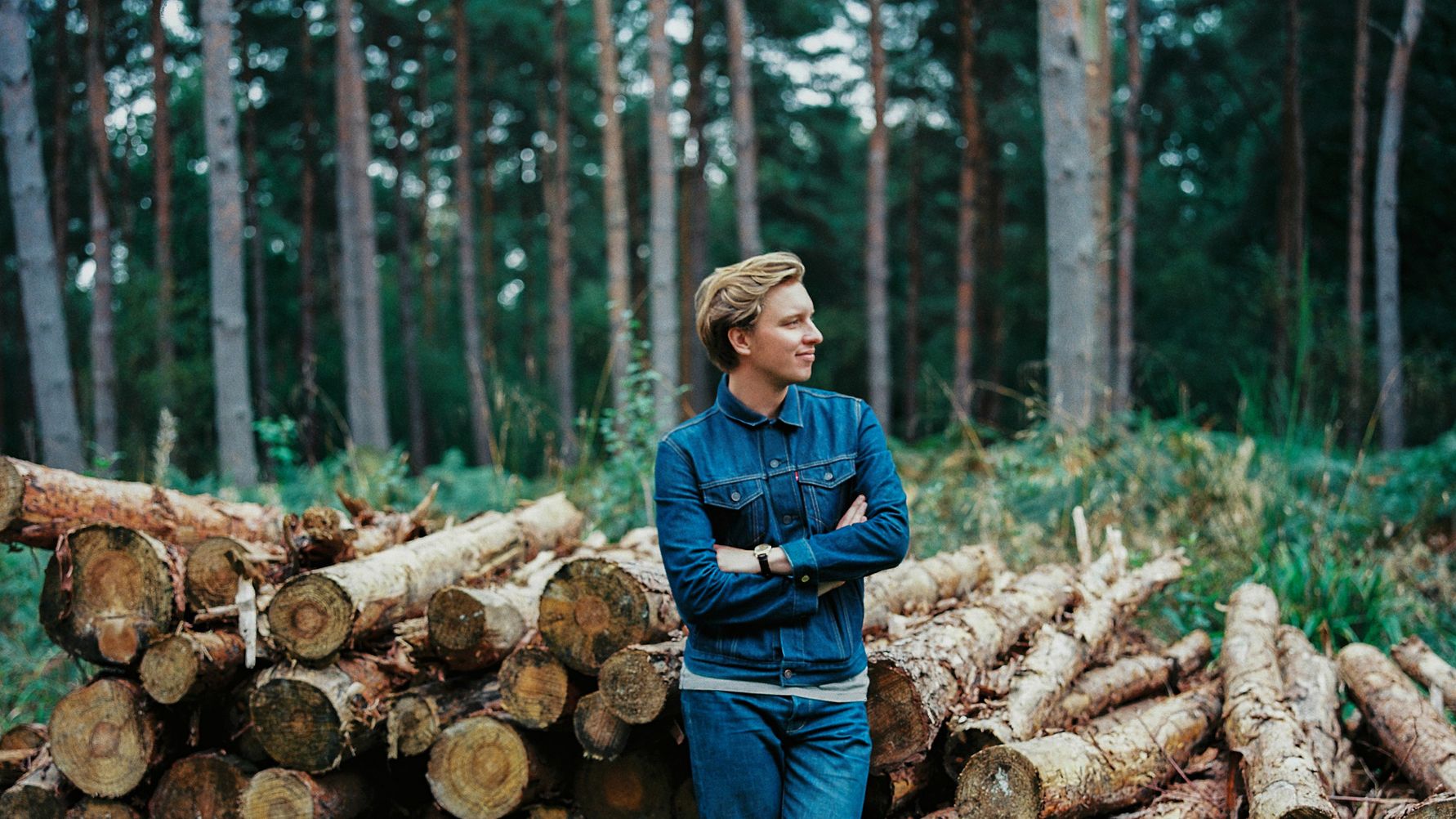I'm going to tear the patch off with a jerk. The new McLaren 750S is an absolutely magical product, and better than its predecessor. the details? A four-liter V8 twin-turbocharged with higher charge pressure, new fuel pumps, and lighter pistons than the 765LT and 750 instead of the previous 720 horsepower. Its weight has been reduced by 30 kg compared to the 720S. Revised shock absorber system, both in terms of hardware in the form of valves and in terms of software in the new control system Proactive Chassis Control III. Wider front track (+6mm), 2kg lighter shocks and suspension components, 3% softer front springs and 4% stiffer rear springs (compared to 720S). A slightly faster steering ratio and a 15 percent shorter final gear for quicker acceleration in a rear-wheel drive car – the list could be made very long. New front and rear bumpers. Sure, the 750S looks a lot like the 720S, but under the skin, 30 percent of the parts are new or heavily modified. The result is the best driving experience I've ever had in a road car on track.
This is new
lighter
The 750S will be McLaren's lightest and most powerful mass-produced car.
more powerful
The M840T V8 received lighter pistons, new fuel pumps and a turbo with increased charge pressure.
Structure changes
Faster steering exchange, wider track width at the front, lighter rims and finely tuned suspension/shock absorbers, plus advanced PCC III Proactive Chassis Control.
However, we'll start by driving on country roads around the Sintra Mountains here in western Portugal. Supercars can be purchased for several reasons. As an investment, as jewelry, or hopefully as a pleasure for all the senses. In my opinion, only when they are used can we truly love them. The more you use it, the better the feeling. Today, along mountain roads at a moderate pace, the car is fun. The steering is perfectly balanced with its weight, responsiveness and communicative ability despite the car not being driven hard at all. The chassis with adjustable, adaptive and hydraulically connected shock absorbers works perfectly. McLaren has invested a lot of time, effort and resources into this structure.
And it feels completely normal. Driving on rough, rickety or gravel mountain roads or on silky highways. The McLaren 750S responds with stable, agile handling in all situations. It's as if the car is being pushed to the ground, but at the same time it can cruise with feather light when needed – always keeping the perfect weight in the steering and response constantly present. With a very low tire profile and an equally low tire side profile, it's difficult to conjure asymmetry, but the McLaren succeeds well. Here you have a big difference compared to the toughest competitor Ferrari 296 GTB, the Italian car does not perform well on worse roads. Important in my world even in yours?
Noise levels on the highway are surprisingly low with the standard Pirelli P Zero tires. Pirelli is McLaren's sole tire supplier and all tires are labeled MC1. The noise level is certainly higher with the optional Pirelli P Zero Corsa tire or with the pure P Zero Trofeo R tire, but the base level is low.
The standard chair is a carbon fiber chair and can only be adjusted forward/backward. Difficult and uncomfortable? never. I sit perfectly, probably because I enjoy sitting that way. With the perfect angle of the backrest, beautifully embraced by carbon fiber and perfect padding – ready for active or relaxed driving. The driving position is absolutely perfect, and the new digital instrument cluster (which weighs 1.8 kg less than before) and the steering wheel are electrically adjusted. There is also an electrically adjustable ergonomic chair, but it's not enough in my opinion. Simply put, the thigh support is very poor.
After a short hiatus, I switched to the 750S Spider. The difference lies in the folding roof and the weight increases by 49 kg. Suspension and damping settings have been tweaked slightly for added weight and the target image is clear, and the Spider should behave just like a coupe on the road. Which he does. With the advantage that the roof can be folded up and down in 11 seconds at speeds of up to 50 km/h. Another feature for all 750S is the front trailer lift system, which now needs just four seconds to raise or lower the vehicle before a speed bump occurs, for example. Again, a practical detail that has a huge impact because it makes everyday life easier, at least compared to its predecessor where the same maneuver took ten seconds. At launch, this extra equipment will cost £2,200 (just under 30,000 kroner in today's money), and should be standard in Sweden.
Return to Estoril Racetrack. With helmet on and HANS protection, I sat in the blue Ludus coupe, fitted with Pirelli P Zero Trofeo R tires. The street-oriented racing seat, the most extreme of the three available, is incomparably comfortable. With the six-point harness attached, you're one with the car. This would be my choice for the chair. Meaningful and much more beautiful than you might think.
During the first 20-minute session, I was feeling my way around. The McLaren 750S does its best to enlighten me. About how I steer too much, brake too early, and generally give too much direction to the car instead of letting it do its job. I follow the lead with the trainer and by the second session it is much better. For the third and final pass, it works as it should and there we jump into the car.
The last corner of a long straight line. A long right turn where I hold the car tight along the apex for an unnaturally long time, before it's allowed to float out just as the straight opens up. In fourth, the car floats away over the oversized curb of the track and fourth becomes fifth. The engine is a miracle of flexibility and explosiveness. Plus, it's completely vibration-free and the sound above 6,500 rpm is fantastic. McLaren has built a new, lighter (-2.2kg) exhaust system for the 750S to, among other things, enhance the notes at the top of the register as it works. She sings well. Driving Mode Track For both the engine/drivetrain and the chassis, the Electronic Stability Control (ESC) system is set to Dynamic mode.
2 questions
To Sandy Holford, Chief Engineer of the McLaren 750S.
Based on the McLaren 720S – what specifically would you like to improve?
– The question was how much pure performance we could give to the 750S without losing the function of the car in everyday life. Feedback about the 720S, from both customers and the press, has been all about how useful the model is. We wanted to develop our strengths further, without losing anything. Make the entire performance window larger.
The design and development of the 720S focused a lot on the aerodynamic conditions of the car. Instead of starting over with the 750S, we improved the look, which is why it can be considered similar. But beneath the veneer, 30 percent of the parts are new.
What do you like most about the new model?
– It's hard to choose. Above all, I like the feeling of how confident the car is on the track. It really encourages you to develop as a driver. Steering feel and response are at the core of our brand. This is key to how engaged the driver is.
Fifth becomes sixth and then at the 200 mark – full on brakes and down to third. The wing stands up for stability while ceramic discs and the McLaren Senna's monobloc yoke (optional fit) build braking power of a kind rarely seen. The load on the front axle is intense and the steering reacts perfectly. With a simple turn of the steering wheel, I aim for the curve, we crest, and, with our eyes fixed on the exit point of the curve over the curb, we accelerate again. The McLaren 750S responds best with small steering movements and a clearly defined trajectory. It is noticeable that the front axle has faster reactions, but without the car appearing nervous. An almost impossible combination, but McLaren succeeds.
Greatest experience? Maybe when I take an open right corner full of 5th with the inside wheels rising above the edge of the track – without the car and direction being negatively affected? When I brake deeply into a tight turn and then downshift for a second for a moment, which helps the car turn faster into the turn? Or just the fact that the McLaren 750S is so good at developing the driver behind the wheel, while maintaining comfort on the way to and from the track? It's time to remove the question mark from the title, because this is the supercar of supercars.
McLaren 750S Coupe
prize: From £243,500 (Spider from £267,900), on sale now, first customer deliveries in Q4 2023.
engine: petrol. V8 engine with 8 cylinders longitudinally, 2 overhead camshafts per cylinder bank, 4 valves per cylinder. Twin turbo. Compression iu bore/stroke 93.0/73.5, cylinder volume 3,994 cm3. Maximum power 750 hp (552 kW) at 7,500 r/min, maximum torque 800 Nm at 440 r/min.
moving in: Mid engine, rear wheel drive. 7-speed dual clutch gearbox.
Suspension/wheel rack: Coil spring. Double triangle front links. Behind the double triangle links.
Guidance: Electro-hydraulic devices. Rotation circle iu
brake: Ventilated ceramic discs front and back. Anti-slip system.
wheel: Metal wheel. Brim width is 9 inches front and 11 inches back. Tires 245/35 R19 front, 305/30 R20 rear.
Dimensions/Weight (cm/kg): Wheelbase 267, length 460, width 216, height 120, track width f/b 168/163. Ground clearance iu Operating weight 1,459, Maximum payload iu, Maximum trailer weight iu Tank 72. Luggage volume (VDA-litres) front 150, rear 210 litres.
Speed Resources: Acceleration from 0-100 km/h in 2.8 seconds, top speed 332 km/h.
Fuel consumption (WLTP): Combined driving 1.22 l/mi. CO2 276 g/km.
Guarantees: New car 3 years, vehicle damage 0 years, rust protection 5 years, paint 3 years. Extended warranty option with McLaren extended warranty of up to 15 years.
tax: 25,642 SEK per year for the first three years. Thereafter 3,990 SEK per year.
His competitors
Ferrari 296 GTB
Ferrari's plug-in hybrid is a highly competent figure that convinces on the track as much as a McLaren 750S. Not exactly comfortable on the road.
prize: About 4,200,000 Swedish krona.
Porsche 992 GT3 RS
A noticeably weaker car and a different kind of car, but very technically loaded with hysterical performance. Not comfortable between passes of the track.
prize: 2,680,000 Swedish krona.

“Entrepreneur. Freelance introvert. Creator. Passionate reader. Certified beer ninja. Food nerd.”











More Stories
For sale: Giro Izod MIPS size 54-61
Windows 11 is annoying users with new pop-ups
Electricity companies get healthy competition – Gevel Dagblad